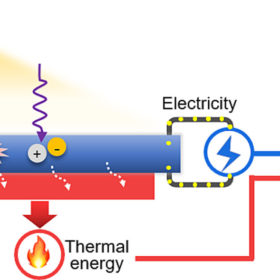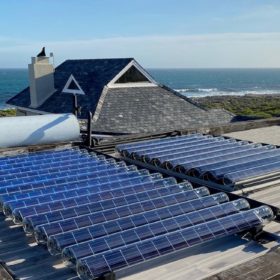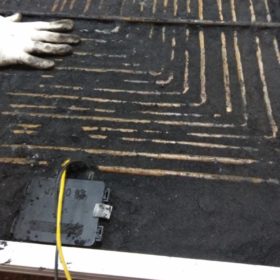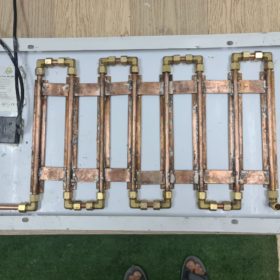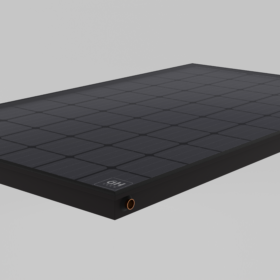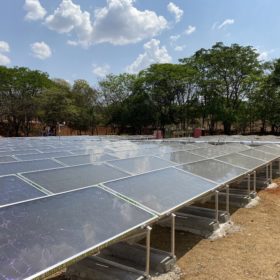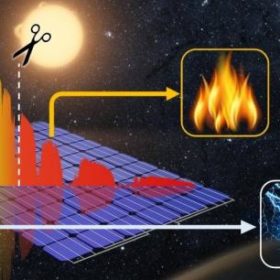Solar desalination via photovoltaic-thermal energy
UK researchers have proposed the use of photovoltaic-thermal energy for desalination purposes, via an approach based on synergistic electro-thermal coupling mechanisms. They have found that some system configurations could offer a lower levelized cost of desalinated water, in addition to higher efficiencies.
Photovoltaic-thermal system in vacuum tube configuration
Naked Energy is commercializing a photovoltaic-thermal system to capture excess heat generated by PV modules for use in buildings. The VirtuPVT system, conceived for rooftop applications, includes an absorber plate, monocrystalline PERC solar cells, a borosilicate vacuum tube, an integrated reflector, and an integrated mounting system.
Photovoltaic-thermal module based on biochar-PCM achieves 79.6% efficiency
Indian scientists have developed a panel with an electrical efficiency of 13% and and thermal efficiency of 66.6 %. They built the system with a 100 W PV panel, a rectangular absorber, and a cooling technique based on a phase change material (PCM) that uses biochar derived from water hyacinth.
Photovoltaic-thermal system based on PCM cooling
Malaysian researchers have developed a system that can absorb heat from PV modules and transmit it to a nanofluid, in order to transform it into thermal energy and use it for different applications. The panels have an overall efficiency of 89%.
New photovoltaic-thermal solar panel from Spain
Spanish PVT specialist Abora Solar has developed aH72SK modules, which combine solar panels with power conversion efficiencies of 17.8% and a thermal efficiency rating of around 70%. Its total area is 1.96 square meters.
Solar thermal panel for large scale applications
The panel has an absorption area of 1.96 m2 and a weight of 27 kg per square meter. According to the manufacturer – Swiss startup TVP Solar – it may be a real booster for thermal output, by combining it with photovoltaics and heat pumps to provide enhanced output per square meter, in particular for low-temperature applications such as district heating.
Spectral-splitting filters for more efficient photovoltaic-thermal panels
A British-Chinese research group has created a new framework to assess the performance and efficiency limits of photovoltaic-thermal solar panels. They say that the improvement of spectral-splitting (SS) filters in the devices will be the key to their future commercial success.
